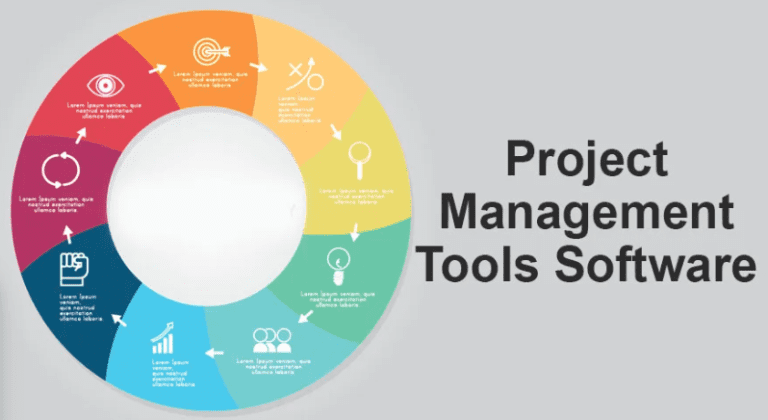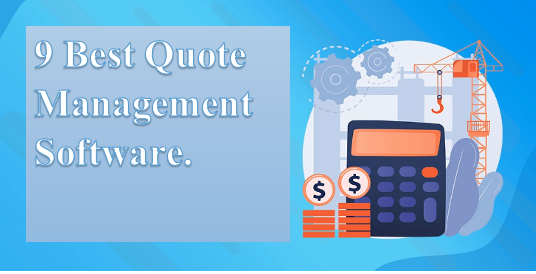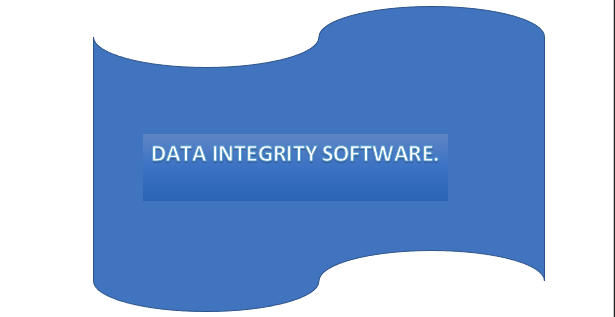Best data Automation tools
Mastering Data Management: The Ultimate Guide to the Best Automation Tools.
Data automation solutions have become a game-changer in the fast-paced business environment of today, when data drives choices and efficiency is crucial. With the help of Best Data Automation Tools, organizations can easily extract, manipulate, and load data while minimizing manual interaction, streamlining complicated data processes.
This game-changing technology has quickly established itself as a pillar of contemporary company tactics, transforming how data is stored and utilized.
A variety of applications and technologies are referred to as “data automation tools” and are used to automate repetitive data-related operations. These solutions handle everything with amazing accuracy and speed, from data extraction and cleansing to transformation and loading into different systems.
Data automation is the process of using technology and software to run tasks related to data processing, data management, data integrity and analysis automatically.
The importance of these tools goes beyond simple practicality; it’s a calculated step toward resource optimization and improving decision-making.
In the past, manual data handling was a time-consuming, error-prone process that slowed down enterprises. This not only slowed down business operations but also created errors that might affect important decision-making procedures.
However, these problems now have practical answers thanks to the development of data automation tools. Now that typical data operations are automated, businesses can devote their human resources to higher-value tasks while ensuring that they are carried out consistently and without error.
It is impossible to exaggerate the value of data automation technologies in contemporary business. They give businesses the ability to react to market dynamics quickly and with precise information.
Businesses gain a competitive edge through the integration and analysis of real-time data to enable more swift decision-making. Additionally, automation is necessary to manage the influx of information without taxing human resources as data volumes continue to expand dramatically.
Take the finance industry, for example. Financial companies deal with enormous amounts of data every day, including client profiles and transaction histories. Managing this amount of information would be impossible without data automation.
However, data may be easily gathered, checked, and used for reporting and analysis with the use of automation systems, freeing up financial professionals to concentrate on long-term planning and client-focused projects.
Data automation solutions are becoming more than just a convenience for modern business; they are a strategic need. These tools are changing how businesses function and make choices by reducing errors, speeding up procedures, and directing human talent into high-value jobs.
The numerous advantages of various data automation tools will be examined as we go further into this debate, revealing the precise ways in which they are revolutionising various industries and sectors.
Benefits of Data Automation Tools.
A new era of production and efficiency has begun in a variety of industries thanks to the advantages of data automation. These tools have become useful resources, expedited operations, and completely change how firms run as they struggle with an ever-increasing influx of data.
1.Heightened accuracy the benefits that data automation offers. Manual data entry is prone to mistakes, which can have significant effects on how decisions are made. Automation ensures that data is handled consistently, lowering the possibility of errors and guaranteeing that crucial business insights are founded on reliable data.
2.Time, another area where data automation excels is in the production of scarce resources. Now, tasks that once required hours or even days of human effort can be completed quickly and efficiently. Since robots can no longer replace creativity, critical thinking, and problem-solving, this increased efficiency frees up human resources to concentrate on strategic objectives.
3.Enhanced collaboration within organizations These tools eliminate information silos and guarantee that departments are working with the same data by centralizing and standardizing data operations. This encourages collaboration and well-informed decision-making across the board while promoting a comprehensive understanding of business operations.
4.The scalability afforded by data automation should not be disregarded. The volume of data grows tremendously as enterprises grow. Managing this spike could result in resource bottlenecks and lowered accuracy without automation. However, automation systems can handle larger data loads, enabling firms to expand without compromising productivity or data quality.
5.The financial implications automation of data are similarly impressive. Organizations save time and money by requiring less intensive manual labor. The long-term savings and increased profitability that automation solutions provide quickly outweigh the initial investment that they require.
Types of Data Automation Tools.
The variety of data automation technologies available is nothing short of transformative in modern business, where data serves as the cornerstone of decision-making.
From data extraction to analysis, these technologies can handle a wide range of data-related jobs with a level of efficiency and accuracy that was previously unthinkable.
1.ETL (Extract, Transform, Load) Tools
The ETL process is at the core of data automation. The purpose of extract, transform, and load (ETL) tools is to collect data from diverse sources, format it consistently, and then put it into a database or other target location. By streamlining a formerly time-consuming and error-prone operation, these solutions make sure that data is prepared for analysis, visualisation and reporting.
2.Workflow Automation Tools.
They plan out intricate workflows that frequently include several systems or divisions. They guarantee that data flows smoothly across various stages of a process. For instance, a customer order could start a chain of events that include everything from inventory checks to shipment alerts. Automation of the workflow reduces the chance of human error while also saving time. For example Zapier, Apache Airflow and Microsoft Power Automate.
3.Data Integration Platforms
Data integration technologies are crucial in a company environment when data is dispersed across numerous applications and platforms. These platforms allow for the seamless transfer of data between various systems, guaranteeing that information is accurate and current throughout the company. They prevent discrepancies that may result from fragmented data and do away with the necessity for human data entry.
4.Data Quality Tools
Every company has the problem of ensuring the accuracy and integrity of their data. Data quality tools automate the process of finding and fixing flaws, duplication, and inconsistencies in datasets. These technologies improve the dependability of company insights and aid in efficient decision-making by protecting data integrity.
5.Robotic Process Automation (RPA)
RPA uses computer programs called robots to automate routine, rule-based processes. RPA is commonly employed in many corporate processes and is also useful for tasks involving data. It can replicate human interactions while operating with unmatched speed and accuracy. It can extract data from one application, change it, and feed it into another system.
6.Business Intelligence and Reporting Tools
Reporting tools automate the production and delivery of reports, dashboards, and visualizations after data preparation and analysis. These solutions make sure that interested parties have timely access to pertinent information, enabling data-driven decisions.
7.Machine Learning and AI Automation
To analyze data trends, forecast outcomes, and automate decision-making processes, advanced data automation solutions use machine learning and artificial intelligence. These technologies may iteratively improve their models based on historical data, leading to insights and actions that were previously labor-intensive.
Best Software for Data Automation.
In today’s data-driven landscape, where businesses operate at the convergence of technology and efficiency, a multitude of software tools have emerged to cater to the escalating demands of data integration, automation, and management.
These tools have revolutionized the way organizations handle information, streamline processes, and maximize productivity. Among the pioneers and trailblazers in this domain are Zapier, Snap Logic, Informatica, Alteryx, Collibra, Microsoft Power Automate, Denodo, Apache Spark, and Workato.
Let’s start by taking a closer look at each piece of software for our in-depth analysis and knowledge.
1.Zapier.

With the help of the robust automation platform Zapier, users can easily automate operations and link different applications. It serves as a link between many programs, enabling seamless data transfer and initiating activities in response to certain circumstances.
Advantages
- User-friendly: No coding is required for creating automations across several apps.
- Extensive App Integration: supports a wide range of applications and services.
- Quick Setup: rapid development of simple automation.
Disadvantages
- Limited Complexity: Not appropriate for extensive data conversions and complex procedures.
- Customization Constraints: Advanced adjustments could be difficult to accomplish.
Features and Functionality:
The main function of Zapier is to build “Zaps,” which are automated workflows that link several apps. To develop these Zaps, users define triggers (events that cause an action to take place) and actions (tasks that need to be completed).
This makes it possible to automate processes like sending emails when a form is submitted, adding new leads to CRM systems, and posting social media updates.
User Interface and Usability:
The Zapier user interface is simple and easy to use. The visual drag-and-drop interface makes creating Zaps simple and enables users to create workflows in a step-by-step manner. This usability guarantees that individuals with various technological backgrounds can set up automations without difficulty.
Performance and Speed:
When automating tasks, Zapier gives effective performance and quickness. When certain events take place, zaps are immediately activated, guaranteeing rapid task completion and data synchronization between apps.
Integration and Compatibility:
In terms of interoperability and integration, Zapier excels. With more than 3,000 integrations, it supports a large number of applications. This adaptability guarantees seamless connectivity across many application ecosystems, allowing users to successfully synchronize data.
Support and Documentation:
Zapier provides extensive support via a thorough knowledge base, frequently asked questions, webinars, and a user community. Users are equipped to resolve problems and make the most of the product thanks to this thorough documentation.
Value for Money:
Zapier adds value by speeding up procedures and saving time. Although the free plan only delivers the bare minimum of functionality, the premium plans’ additional capabilities, such as multi-step Zaps, conditional logic, and priority support, make the purchase worthwhile for companies looking to increase their level of automation.
Use Cases:
Zapier is useful in a variety of situations. It streamlines customer assistance by generating support tickets from emails, improves marketing by automatically distributing blog posts on social media, and automates lead creation by integrating form submissions to CRM applications. Due to its industry-spanning adaptability, users may optimize their workflows.
Conclusion:
Businesses looking to improve operations and save time will find Zapier to be a useful tool due to its intuitive design, wide range of connectors, and automation features. Although it may not support intricate workflows, its usability and adaptability make it a crucial component of any organization’s automation toolset.
2.Collibra.
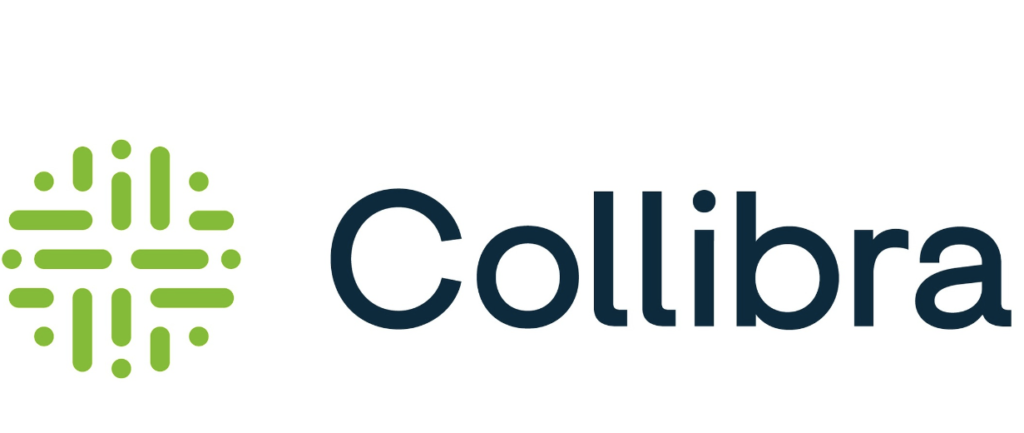
It is a thorough platform for data governance that enables businesses to manage, classify, and rule over their data assets while assuring data quality, compliance, and teamwork. It provides tools for managing metadata, tracking the history of data, stewarding data, and enforcing policies, assisting businesses in maximizing data use and decision-making while preserving data integrity and regulatory compliance.
Advantages
- Comprehensive Data Governance: Collibra provides a comprehensive approach to data governance that includes stewardship, lineage management, and metadata management.
- Data Collaboration: It promotes team collaboration by providing a solitary platform for data documentation and sharing.
- Regulatory Compliance: Collibra assists enterprises in following data regulations by enforcing policies and monitoring compliance.
- Data Quality: It makes data quality management easier by pointing out discrepancies and errors.
- Data Catalog: The data catalog from Collibra improves data utilization and discovery within the company.
Disadvantages
- Complex Implementation: Collibra installation can be time- and resource-consuming and call for technical know-how.
- Learning Curve: For new users, the platform’s features could require some getting used to.
- Cost: Collibra may cost more due to its extensive capabilities, making larger businesses a better fit.
- Maintenance: Collibra’s ongoing care and upkeep may require devoted efforts.
- Integration Challenges: Collibra integration with current systems can need some adaptation and work.
Features and Functionality:
Collibra provides strong functionality and features for thorough data management. One of its main characteristics is.
- centralized metadata management
- data lineage visualization, and stewardship workflows
- ensuring data accuracy and compliance
Teams have access to a collaborative environment for classifying, locating, and sharing data assets with Collibra. It helps with regulatory compliance by enforcing policies, and data quality is increased by identifying and resolving inconsistencies.
The platform’s data catalog and role-based access controls both promote secure data usage and data discovery. Collibra’s comprehensive strategy encourages data-driven operations and informed decision-making by providing organizations with the tools they need for structured data governance.
User Interface and Usability:
Collibra’s user-friendly interface makes it simpler to carry out data governance duties. The site’s straightforward design makes it simple for users to navigate and engage with it. The interface’s basic data presentation makes it easier to comprehend complicated data lineage and linkages.
Because of Collibra’s user-centric approach, both technical and non-technical users can engage, document data, and administer governance laws successfully. This usability enables users to actively participate in data management and governance responsibilities without necessitating extensive training by lowering the learning curve and promoting widespread adoption.
Performance & Speed and Integration &Compatibility of Collibra
Collibra emphasizes efficient Performance & Speed by providing quick access to.
- metadata
- lineage information
It makes use of better data processing to ensure rapid responses and raise user productivity. Collibra makes it possible to integrate and be compatible with a variety of platforms, programs, and data sources. It encourages interoperability through links and APIs, facilitating seamless data exchange across diverse systems. Collibra can be readily integrated into businesses’ data management procedures because it is compatible with existing data ecosystems.
Support & Documentation:
Collibra places a high priority on support and documentation. It offers a wealth of materials, such as training videos, user manuals, and a professional customer support team.
To ensure that users can fully utilize the functionalities of the platform, Collibra offers support ranging from onboarding to complex troubleshooting. This robust ecosystem of support encourages efficient data governance, raises user proficiency, and lessens interruptions.
Value for Money:
Collibra can provide a significant return on investment thanks to its extensive data governance features. Despite potentially higher initial costs, its long-term benefits include improved data accuracy, regulatory compliance, and simpler operations.
Because of the platform’s benefits on data quality and well-informed decision-making, especially for larger enterprises that require complicated data governance, it is a worthy investment.
Use Cases:
Collibra can be used in a wide range of Use Cases. Regulatory compliance is crucial for industries dealing with sensitive data, such as banking and healthcare, where it is required. Large organizations benefit from its ability to handle complex data environments successfully.
Collibra is used to manage information, track data lineage, and foster collaboration and compliance with data standards. Its importance in promoting data-driven decision-making emphasizes how broadly it may be used to fields that seek to optimize the value of their data and maintain data integrity.
3.Snaplogic.

An enterprise can integrate different apps, data sources, and systems using SnapLogic, a cloud-based platform for data integration. It offers visual tools for building data pipelines, enabling users to construct intricate operations without requiring a great deal of coding.
Advantages
- Visual Interface: provides a simple visual interface for building sophisticated data pipelines.
- Cloud-Focused: suitable for hybrid settings and cloud-based integrations.
- Scalability: able to manage data flows and integrations of a high scale.
Disadvantages
- Learning Curve: The mastery of advanced features could take some time.
- Pricing: Larger businesses and intensive usage may result in higher costs.
Features and Functionality:
The primary function of SnapLogic is the creation of data pipelines, or “Snaps.” Snaps are pre-built connectors that make it easier to integrate apps, databases, APIs, and other things. Users move Snaps around to construct workflows, which makes it possible to do operations like data transformation, migration, and synchronization.
User Interface and Usability:
An intuitive interface is a top priority for SnapLogic. Its drag-and-drop visual design environment enables users to connect Snaps to create complex data pipelines. By bridging the gap between technical and non-technical users, this usability improves collaboration.
Performance and Speed:
SnapLogic places a strong emphasis on effectiveness and quickness. Because of its cloud-based architecture and parallel processing, it can analyze and integrate data quickly, boosting operational efficiency and data precision.
Integration and Compatibility:
SnapLogic excels at compatibility and integration. A wide variety of apps, databases, cloud services, and APIs are supported, allowing businesses to easily link different systems and technologies.
Support and Documentation:
SnapLogic provides assistance via a community forum, online resources, and documentation. While its support network helps users with instruction and troubleshooting, some customers may need extra help for challenging situations.
Value for Money:
The significance of SnapLogic is in its capacity to simplify intricate integrations. Although its initial expenses may be higher for lengthy usage, its long-term advantages include increased productivity, decreased manual labor, and superior data insights.
Use Cases:
SnapLogic has uses in a variety of contexts. It allows real-time analytics by combining data sources, automates data synchronization between applications, and enables data transfer between cloud and on-premises systems. It maintains inventory and order data in e-commerce, while it links patient records from several systems in healthcare.
Conclusion:
For businesses looking for seamless data integration, SnapLogic’s beautiful interface, wide range of connections, and effective performance make it a powerful tool. Although it could require some initial learning, its capacity to manage intricate integrations and a variety of use cases makes it a valuable tool for streamlining data workflows and increasing operational effectiveness.
4.Informatica.
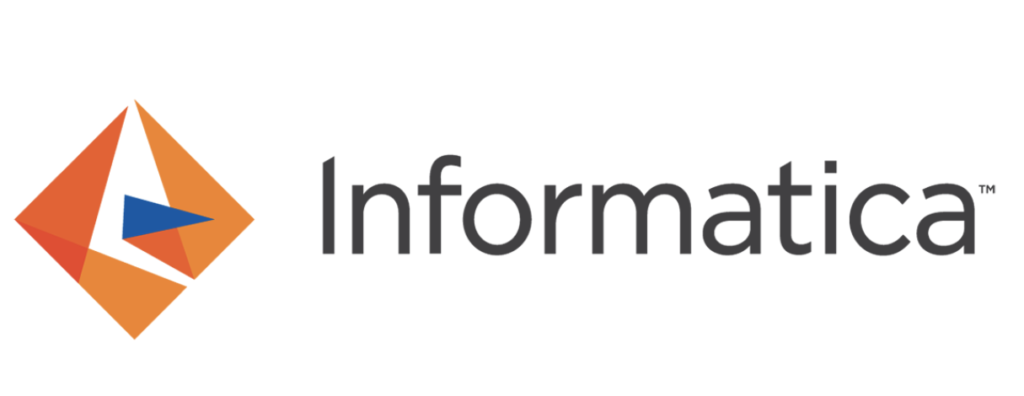
Leading data management and integration software platform is Informatica. For businesses to effectively integrate, purge, transform, and manage their data from diverse sources, whether on-premises or in the cloud, it offers tools and solutions.
In order to help businesses achieve data quality, data governance, master data management, and data integration and to ensure consistent, accurate, and reliable data for better decision-making and enhanced business processes, Informatica offers a wide range of products. To address data difficulties, increase operational effectiveness, and generate insights from data assets, the platform is widely used across numerous sectors.
Advantages
- Comprehensive Integration: provides strong features for data transformation, integration, and quality.
- Data Governance: Strong data governance capabilities to guarantee compliance and consistency with data.
- Scalability: supports integrations at both the small-scale and enterprise levels.
Disadvantages
- Cost: Licensing and implementation costs can be high.
- Complexity: For effective use, there can be a learning curve and special resources needed.
Features and Functionality:
Data integration, data quality control, master data management, and data governance are among the fundamental capabilities of Informatica. Organizations can use it to build data pipelines, convert data, and guarantee data compliance and correctness. The suite of Informatica includes a number of products made to meet diverse data management requirements.
User Interface and Usability:
Informatica concentrates on offering an intuitive user interface. Using its visual design tools, users may create data workflows that break down complex data operations into more manageable activities. These tools’ usability fosters collaboration and quickens the processes of data integration and transformation.
Performance and Speed:
Through its improved data processing capabilities, Informatica places an emphasis on performance and speed. To quickly handle enormous data quantities, it uses effective algorithms and parallel processing, which enables rapid data integration and transformation.
Integration and Compatibility:
In terms of interoperability and integration, Informatica excels. It supports a wide variety of data sources, including databases, apps, on-premises and cloud-based systems, and more. Its adaptability guarantees smooth data exchange across a range of devices.
Support and Documentation:
Strong documentation and support are provided by Informatica. It offers tools like user manuals, knowledge bases, forums, and customer service to help users troubleshoot problems and make the most of the platform’s features.
Value for Money:
The value of Informatica can be found in its all-inclusive data management solutions. Even though initial implementation costs could be considerable, greater data accuracy, faster processes, and improved decision-making over the long run ultimately make the investment worthwhile.
Use Cases:
Informatica is used in many different sectors. It enables e-commerce platforms to connect data for precise inventory management, aids healthcare providers in managing patient data, and helps financial institutions achieve regulatory compliance. Its adaptability extends to industries where data management and integration are essential, like manufacturing and telecommunications.
Conclusion:
Because of its emphasis on data management, quality, and integration, Informatica is positioned as a reliable solution for businesses looking to maximize their data assets. A powerful ally in navigating the complexity of data management and promoting informed decision-making, it combines rich features with user-friendly interfaces and extended support.
5.Alteryx.

Organizations may combine, clean, analyze, and visualize data with the help of Alteryx, a powerful data preparation and analytics platform. It is an effective tool for data professionals and analysts since it provides a user-friendly interface that enables users to edit data without writing a lot of code.
Advantages
- Data Preparation: Excellent for sophisticated analytics, data mixing, and data preparation.
- User-Friendly: offers an intuitive user interface for data management.
- Analytics Power enables data analysis without the requirement for highly developed coding abilities.
Disadvantages
- Cost: Can be expensive, especially for smaller organizations.
- Focus on Analytics: More geared towards analytics and data manipulation rather than pure integration.
Features and Functionality:
Data blending, data purification, predictive analytics, and spatial analytics are among Alteryx’s key capabilities. By integrating data from numerous sources, preparing it for analysis, and generating insights through advanced analytics and visualization, it enables users to build workflows.
User Interface and Usability:
A user-friendly interface is important to Alteryx. Users can create data workflows with its visual design environment’s drag-and-drop features. This user-friendly method bridges the gap between business users and data professionals by enabling people to properly combine, clean up, and analyze data.
Performance and Speed:
Performance and speed are key considerations for Alteryx when preparing and analyzing data. It processes massive datasets effectively using parallel processing and specialized algorithms, accelerating operating speed and data accuracy.
Integration and Compatibility:
Different data sources, databases, cloud platforms, and apps can all be integrated with Alteryx. Its compatibility guarantees smooth data integration and exchange across many systems, allowing users to deal with data from various sources.
Support and Documentation:
Strong support and documentation are provided by Alteryx. It offers tools to help users navigate the platform and solve problems, including training materials, user manuals, online communities, and customer support.
Value for Money:
The usefulness of Alteryx rests in its ability to perform advanced analyses. Improved data insights, quicker analytics procedures, and improved decision-making are some of its long-term benefits, which make up for its somewhat greater upfront cost for firms looking for data-driven results.
Use Cases:
Alteryx is used in many different industries. It helps retailers manage their inventories more effectively, gives marketing teams the ability to examine consumer trends, and supports financial institutions in detecting fraud. Its adaptability allows data professionals to combine, analyze, and visualize data for wise decision-making in a variety of industries, including healthcare, manufacturing, and more.
Conclusion:
For businesses looking to leverage the power of data, Alteryx’s proficiency in data preparation and analytics, together with its user-friendly interface and extensive support, make it a significant asset. It is an essential tool for promoting efficiency and creativity in today’s data-driven environment because of its capacity to streamline data operations and offer actionable insights.
6.Microsoft Power Automate.

An automation platform called Microsoft Power Automate enables customers to design workflows for automating operations across a variety of services and apps. It effortlessly connects with Microsoft 365 and other cloud-based apps, enabling users to improve productivity and collaboration. It was formerly known as Microsoft Flow.
Advantages
- Efficiency: These tools simplify procedures and cut down on manual work, improving overall operational effectiveness.
- Accuracy: Automated workflows reduce human error, improving data consistency and quality.
- Productivity: Because tasks are finished more quickly, employees may concentrate on more value-added activities.
- Integration: Data flows are ensured via seamless integration with numerous applications and systems.
Disadvantages
- Learning Curve: Complex workflow implementation and configuration may involve a learning curve.
- Customization Challenges: Workflows that are highly customized could call for highly skilled technical knowledge.
- Initial Investment: Licensing fees for software, setup, and training may be upfront expenses.
- Dependency: If processes fail, a dependence on automation that is too great could cause problems.
Features and Functionality:
Trigger-based automation, connectivity for different apps, data manipulation, and approval workflows are among the main capabilities of Power Automate. Users can use it to automate operations like data entry, approval procedures, notification systems, and more, increasing productivity and lowering human labor requirements.
User Interface and Usability:
An intuitive user interface is a top priority for Power Automate. Its visual designer makes automation accessible to both technical and non-technical users by allowing users to develop workflows using a straightforward drag-and-drop method.
Performance and Speed:
Speed and effective performance are ensured with Power Automate. Workflows are immediately started in response to certain events, ensuring that activities are completed on time and that data is synchronized correctly.
Integration and Compatibility:
In the Microsoft ecosystem, Power Automate shines at compatibility and integration. Microsoft 365, SharePoint, Dynamics 365, and other cloud services are all effortlessly integrated with it. Its interoperability with non-Microsoft apps could be constrained, though.
Support and Documentation:
Through Microsoft’s enormous resources, Power Automate is given strong support. Users can access support resources, forums, and documentation to resolve problems and make the most of the platform’s features.
Value for Money:
The significance of Power Automate is seen in its flawless connection with Microsoft programs. Its advantages for firms that significantly rely on Microsoft services include increased productivity, simplified procedures, and lower operating expenses.
Use Cases:
Power Automate is useful in a variety of situations. It controls document workflow approval processes, automates CRM record updates, and automates email notifications for job completion. Organizations are given the ability to automate repetitive operations and concentrate on key projects.
Conclusion:
Microsoft Power Automate is a useful tool for businesses looking to boost productivity due to its seamless integration, user-friendly interface, and capacity to automate processes inside the Microsoft ecosystem. Although its features may be tailored for Microsoft apps, its ability to improve productivity and streamline procedures is visible across a range of company operations.
7.Workato.

Businesses may link applications, automate workflows, and optimize data operations with the powerful integration and automation platform Workato. It provides a wide range of pre-built connections and enables users to build sophisticated integrations and automate processes without the need for in-depth coding expertise.
Advantages
- Scalability: These platforms handle increasing workloads to meet the needs of expanding businesses.
- Consistency: Workflows follow established procedures to guarantee consistency and compliance.
- Collaboration: Collaboration between teams is facilitated by automated notifications and approvals.
Disadvantages
- Complex workflow implementation and configuration may involve a learning curve.
- Compatibility Issues: Compatibility issues may arise when integrating with legacy systems.
- Maintenance: It requires ongoing monitoring and updating to make sure everything runs well.
- Complexity for Small Tasks: It’s possible that adding automation to relatively simple chores won’t always bring about noticeable benefits.
Features and Functionality:
Workflow automation, data synchronization, and process orchestration are the three main components of Workato. It enables users to create integrations that link several programs, automate data flows, and start activities in response to certain occurrences.
User Interface and Usability:
An intuitive UI is a top priority for Workato. Because of its user-friendly layout, both technical and non-technical users can develop processes using a visual method, making it possible to leverage sophisticated interconnections.
Performance and Speed:
Workato places a strong emphasis on effectiveness and quickness. Its architecture promotes speedy data processing, guaranteeing the prompt and flawless execution of integrations and automations.
Integration and Compatibility:
Workato excels at compatibility and integration. It provides a sizable library of connectors that span apps, databases, APIs, and more, allowing for smooth data interchange between multiple systems.
Support and Documentation:
Through its documentation, online tools, and community forum, Workato offers comprehensive support. Users get access to manuals, tutorials, and professional consultation for assistance and problem-solving.
Value for Money:
Workato’s extensive automation and integration capabilities are the foundation of its value for money. Long-term advantages of the platform include improved workflows, less manual activities, and more accurate data, albeit prices may differ.
Use Cases:
Workato is used in many different sectors. It streamlines customer data between CRM and marketing platforms, automates lead-to-account sales processes, links finance and ERP systems for precise financial reporting, and more. Its adaptability covers the HR, IT, and customer service divisions, helping businesses to improve productivity and teamwork.
Conclusion:
For businesses looking to improve their data operations, Workato’s vast integration options, user-friendly interface, and robust support environment are assets. Although its complexity may be better suited for larger enterprises, a variety of use cases demonstrate its ability to expedite operations and facilitate cross-application cooperation.
8.Denodo.

With the help of the data virtualization platform Denodo, businesses can seamlessly integrate, manage, and deliver data from diverse sources without having to move the data physically. It offers a unified view of several data sources, making it easier to access and analyze data.
Advantages and Disadvantages:
Denodo has several benefits. Its data virtualization strategy reduces data duplication and maintenance by doing away with the need for intricate ETL processes. However, other businesses may find its price to be a deterrent due to its extensive capabilities, which may require specialist knowledge.
Features and Functionality:
Data virtualization, data integration, and data abstraction are among the main characteristics of Denodo. Users can build virtualized data models that offer a unified view of the data, facilitating analytics and reporting across many sources.
User Interface and Usability:
User experience is a priority for Denodo, yet technical users are its primary audience. Because of the way it is built, users may specify data links and develop virtual data models, making data integration possible for experts.
Performance and Speed:
Performance and quickness in data access and integration are key concepts in Denodo. Fast data retrieval is made possible by its in-memory caching and optimization algorithms, giving real-time access to unified data sets.
Integration and Compatibility:
Denodo excels at compatibility and integration. It supports numerous databases, cloud services, APIs, and data sources, enabling easy data access and system integration.
Support and Documentation:
Through its documentation, online resources, and customer service, Denodo provides comprehensive support. Users can successfully take advantage of the platform’s capabilities thanks to its extensive resources.
Value for Money:
The data virtualization capabilities of Denodo are where its value for money lies. The long-term advantages of this technology include less data duplication, quicker data access, and greater decision-making through real-time insights, even though its cost could be higher for some enterprises.
Use Cases:
Denodo is useful in situations where real-time data access and integration are necessary. The ability to build unified data views for reporting, analytics, and business intelligence is provided to enterprises. It assists in gathering data from multiple branches for analysis in the financial services industry. It incorporates patient data for holistic insights in healthcare.
Conclusion:
With its expertise in data virtualization, performance optimization, and support resources, Denodo is positioned as a useful tool for businesses looking to capitalize on the power of unified data. It is a benefit for improving data-driven decision-making and operational efficiency since it can simplify data access and integration without physically relocating data.
9.Apache Spark.

For the analysis and processing of large amounts of data, Apache Spark is an open-source distributed computing framework. It is a flexible tool for a variety of data-intensive jobs because to its high-speed data processing capabilities, powerful analytics, and machine learning algorithms.
Advantages and Disadvantages:
Apache Spark has a number of benefits. Its in-memory processing enables quick data processing and analysis. Its setup and deployment, however, could call for technical know-how, and some challenging workloads might require optimization.
Features and Functionality:
Batch processing, real-time data streaming, machine learning, and graph processing are among the main capabilities of Spark. For data engineers, analysts, and scientists to handle huge datasets, evaluate them, and draw conclusions from them, it offers a uniform platform.
User Interface and Usability:
For technical users, Apache Spark prioritizes usability. In order to build code in well-known programming languages for effective data processing and analysis, it provides a variety of APIs, including those for Scala, Python, and Java.
Performance and Speed:
Apache Spark is well known for its outstanding efficiency and speed. Compared to conventional disk-based systems, its in-memory data processing substantially speeds up activities, enabling real-time analytics and speedier data processing.
Integration and Compatibility:
Spark is excellent at integrating with and supporting a wide range of data sources and formats. In order to provide seamless data integration and processing across many systems, it supports a variety of file formats, databases, and data processing tools.
Support and Documentation:
Through online tutorials, forums, and documentation, Apache Spark provides thorough assistance. Users have access to materials that can be used to resolve problems and learn best practices for utilizing Spark to its fullest.
Value for Money:
The usefulness of Apache Spark rests in its potent data processing skills. Although there might not be any direct costs associated with the open-source software, businesses might have to pay for the infrastructure and knowledge needed for a successful installation.
Use Cases:
Apache Spark is used in many different fields. It provides real-time analytics on streaming data, processes big datasets for corporate intelligence and reporting, and enables machine learning functions like fraud detection and recommendation systems.
Conclusion:
Apache Spark is an essential tool for businesses dealing with large-scale data processing and analysis due to its quick data processing, wide range of functionality, and community support. Although it necessitates technical expertise and optimization in some situations, its capacity to handle a variety of workloads and offer insights quickly places it in a strong position to support data-driven innovation and decision-making.
Cases of Data Automation Tools.
Data automation technologies’ numerous use cases across sectors eloquently demonstrate their usability and adaptability. These tools are sparking efficiency and innovation in ways that were once thought to be impossible, from changing labor-intensive procedures to reinventing decision-making.
Retail and E-commerce: Data automation solutions are essential for controlling inventory, improving pricing strategies, and improving the customer experience in the dynamic world of retail and e-commerce. For instance, these solutions can minimize administrative intervention while automatically updating product availability, adjusting prices depending on market trends, and personalizing suggestions for customers.
Healthcare and Life Sciences: Data automation solutions are revolutionizing healthcare by automating the management of patient data, guaranteeing regulatory compliance, and improving diagnostic procedures. These solutions can streamline communication across various healthcare systems, automate updates to patient records, detect anomalies in medical data, and enhance patient care coordination.
Manufacturing and Supply Chain: The use of data automation solutions improves production effectiveness and inventory control in the complex web of supply chain and manufacturing activities. They can forecast the need for equipment maintenance, simplify the purchasing process, and offer real-time visibility into supply chain activities, enabling prompt responses to interruptions.
Finance and Banking: For decision-making, the financial sector primarily depends on precise and fast data. By analyzing enormous amounts of financial data, data automation solutions speed up transaction processing, automate regulatory reporting, and perform fraud detection, preserving the integrity of financial systems.
Marketing and Customer Relationship Management (CRM): Data automation solutions are crucial for marketers to personalize client interactions. They create a seamless and interesting customer journey by analyzing consumer behavior to send customized messages, automate email campaigns, and change marketing strategy in real time.
Human Resources: By automating candidate screening, interview scheduling, and document gathering, data automation solutions in HR streamline the hiring and onboarding process. Additionally, they help with performance management by automating the gathering and evaluation of employee input, which raises employee engagement.
Education and E-learning: Data automation tools support learning management and student performance analysis in the educational sector. In order to provide a more specialized and successful educational experience, they monitor student progress, pinpoint areas that need development, and personalize learning routes.
Energy and Utilities: Tools for data automation in the energy sector can optimize energy use, automate infrastructure monitoring, and forecast maintenance requirements for power plants and distribution networks, providing a consistent and effective supply of energy.
Implementation Considerations of Data Automation Tools
Despite the enticing potential advantages of Data Automation Tools., its deployment necessitates considerable preparation and thought. These tools have the potential to alter operations, but for enterprises to fully utilize them, they must navigate through a number of crucial issues.
1. Clear Objectives
Clearly defining your goals is essential before automating anything. What actions or procedures are you trying to automate? Are you want to increase decision-making, decrease manual labor, or improve data accuracy? Goals that are clearly specified help you choose the right tools and make sure that automation fits your company’s requirements.
2. Data Quality and Compatibility
Automating erroneous or inconsistent data can produce unreliable outcomes much more quickly. It is crucial to guarantee data interoperability and quality across platforms. To stop errors from spreading through automated processes, data must first be standardized and cleaned.
3. Process Mapping and Optimization
Automation functions best when used with clear-cut, effective processes. Spend some time mapping out your current processes and locating any bottlenecks, duplications, or inefficiencies. To make sure you’re automating the most effective version of your workflows, streamline processes before doing so.
4. Change Management
Roles and duties may need to shift as a result of automation. Previously performing manual labor, employees may now have greater strategic duties. Teams that have undergone effective change management are prepared to accept automation and comprehend its purpose.
5. Data Security and Privacy
Sensitive data is frequently handled during automation. Make sure the automation solutions you choose abide by the data security and privacy laws that apply to your company. To protect sensitive information, use effective encryption, access controls, and data governance procedures.
6. Integration and Compatibility
Think about how automation solutions will work with your current IT setup. A coherent process requires seamless connection with your existing systems, databases, and applications. By doing this, automated data silos are avoided and free data flow throughout your organization is guaranteed.
7. Scalability
The amount of data and processes that need to be automated increases as your firm expands. Select solutions that can expand to meet your demands, allowing for growing workloads and more complicated data without sacrificing performance.
8. Training and Support
Spend money on staff training so they can use the chosen automation solutions efficiently. Employees who have received adequate training can use the tools with ease and identify typical problems. Make sure the tool’s manufacturer is providing you with dependable customer assistance as well.
9. Testing and Monitoring
Automation implementation is a continuous process. Test automated processes frequently to find bugs and improve operations. Create a monitoring system for the automated tasks to quickly spot anomalies or performance problems.
10. Cost-Benefit Analysis
Even though automation has many advantages, it’s crucial to perform a cost-benefit analysis. Take into account the original cost, ongoing expenses, and prospective financial gains from automation. Make sure the long-term advantages outweigh the short-term expenses.
Challenges of Data Automation Tools.
Although data automation technologies promise a wide range of advantages, they can be difficult to integrate and use. To fully utilize the capabilities of these tools and guarantee a seamless transition to automated operations, it is essential to acknowledge and address these difficulties.
- Data Quality and Consistency: Poor data quality can have an amplified effect with automation. Automated data that is erroneous, lacking, or inconsistent will likewise produce inaccurate outcomes. Before automating processes, organizations must invest in data cleaning and standardization initiatives to stop errors from spreading.
- Integration Complexities: It can be difficult to integrate automation tools with current systems. A fluid data flow may be hampered by legacy systems, multiple platforms, and different data formats. For successful implementation, compatibility and integration issues could necessitate more time and resources.
- Skill Gap: The organization frequently needs new skill sets to adopt data automation techniques. Employees must understand how to use and efficiently troubleshoot the tools. Maximizing tool efficiency requires offering training and resources to close this skill gap.
- Change Management: Job duties and responsibilities can change as a result of automation. Employee resistance to change can thwart adoption efforts. To overcome resistance, effective change management strategies are essential. These include clear communication and participation in decision-making.
- Complex Processes: Automation works best for routine and rule-based operations, but complicated processes may still need manual assistance or human judgment. It can be difficult to decide where to draw the line between automation and human involvement, which calls for a complex understanding of the processes.
- Initial Investment: The initial cost of software licensing, hardware, training, and system integration is frequently necessary to implement data automation solutions. Businesses must carefully balance the immediate expenses with the long-term advantages.
- Ongoing Maintenance: To maintain their best performance, automation tools need regular upkeep and updates. The automated procedures may need to be modified over time due to modifications in data sources, business rules, or legal requirements.
- Security and Privacy Concerns: Sensitive data is handled during automated data processing. To avoid data breaches or regulatory non-compliance, it is essential to ensure data security and privacy compliance.
- Unforeseen Errors: Even if automation is meant to reduce errors, it might still result in brand-new problems. Unintended consequences that require prompt detection and correction might be caused by incorrectly designed automated workflows, incorrect coding, or unexpected data circumstances.
- Dependency on Technology: Risky can be a dependence on automation too much. If backup plans or manual alternatives are not used, technical issues, system outages, or software failures can disrupt crucial processes.
Future Trends in Data Automation.
With the advancement of technology and the adoption of increasingly sophisticated solutions by businesses, the landscape of data automation technologies is primed for significant shifts. In a data-driven environment, staying ahead of the curve is essential for maximizing the promise of automation.
AI-Driven Automation
Data automation will increasingly depend on artificial intelligence (AI) and machine learning (ML). With the use of AI-powered tools, decision-making can become more autonomous by analyzing trends, learning from data, and making predictions. Automation technologies will become smarter and more adaptive as AI capabilities develop, handling complicated activities that previously required human intervention.
Hyper-Automation
Hyper-automation is the use of AI, ML, and other cutting-edge technologies to automate and optimize operations above and beyond what can be done with conventional automation techniques. This approach involves managing interactions between humans and machines, automating complex procedures from beginning to end, and using AI to make judgments.
Predictive Analytics and Insights
Instead, then only processing data, automation systems will increasingly concentrate on providing predictive insights. To predict trends, consumer behavior, and market shifts, they will use both historical data and current information. Businesses will be able to make proactive decisions and obtain a competitive advantage because to this predictive skill.
Collaborative Automation
Future automation tools will make it possible for more collaborative operations, enabling seamless collaboration between humans and machines. By automating repetitive processes and enhancing decision-making with data-driven insights, automation will improve human skills by promoting a harmonious synergy between man and machine.
Edge and IoT Automation
Data automation will go from centralized systems to edge devices as Internet of Things (IoT) and edge computing devices proliferate. Critical applications like industrial automation and healthcare will be able to make decisions quickly and with less latency thanks to the processing of data carried out by automation tools closer to the point of origin.
Natural Language Processing (NLP)
NLP makes it possible for people to communicate with technology in natural language. By allowing consumers to interact with automation tools via voice, text, or chat interfaces, NLP will improve the usability and accessibility of data automation.
Customization and Low-Code/No-Code Solutions
It will be easier to customize and use automation tools. Users with little or no coding experience will be able to create and implement automation workflows customized to their individual needs thanks to low-code or no-code platforms, democratizing the potential of automation throughout the company.
Ethical and Responsible Automation
Ethical concerns will become increasingly important as automation spreads. Future automation technologies will incorporate moral principles to ensure that automation is used ethically and that biases are kept to a minimum during decision-making.
Continuous Learning and Adaptation
Automation tools will improve their adaptability and ability to learn continuously. They will evolve to handle new scenarios and adapt to changing data patterns, lowering the requirement for manual changes and raising overall efficiency.
Conclusion.
The advantages and importance of Best Data Automation Tools in contemporary company are without dispute. These tools have evolved from being merely useful conveniences to strategic imperatives that are reshaping the way business’s function, make choices, and innovate.
Data automation is a catalyst for success in today’s data-driven market by automating processes, improving accuracy, and freeing up human resources for higher-value work.
Data automation offers several, significant benefits. Automation affects every aspect of business operations, from enhanced decision-making and decreased manual labor to increased operational efficiency and improved data quality. By utilizing the power of data-driven insights, it enables organizations to adapt quickly to market movements, personalize consumer experiences, and stay ahead of the competition.
Promoting data automation among firms goes beyond following a trend; it’s a strategic necessity. Automation gives businesses a competitive edge by streamlining operations, cutting expenses, and fostering innovation. Automation promotes agility, allowing firms to respond to shifting environments and capture new possibilities.
Accepting Data Automation Tools necessitates a mental adjustment. It requires accepting that automation amplifies human talents rather than replacing human expertise. Businesses may free up their employees to concentrate on strategic thinking, creativity, and problem-solving — the three crucial traits that fuel innovation — by delegating regular activities to automation systems.
We are unquestionably on the verge of a revolution as we consider the revolutionary potential of data automation. Automation tools aim to reimagine how we operate, how we gain insights, and how we create the future, not merely to make procedures more efficient. Businesses may position themselves to prosper in a time where data is plentiful and its strategic use is crucial by adopting automation.
In conclusion, data automation represents a paradigm shift rather than merely a technological advance. Its advantages are extensive, it has the ability to change the world, and its importance cannot be emphasized.
The businesses that grab this chance will transform industries, reinvent customer experiences, and establish new standards for innovation and efficiency. The moment to embrace data automation is now in order to transform data into a tactical advantage that leads us to a future filled with countless opportunities.





